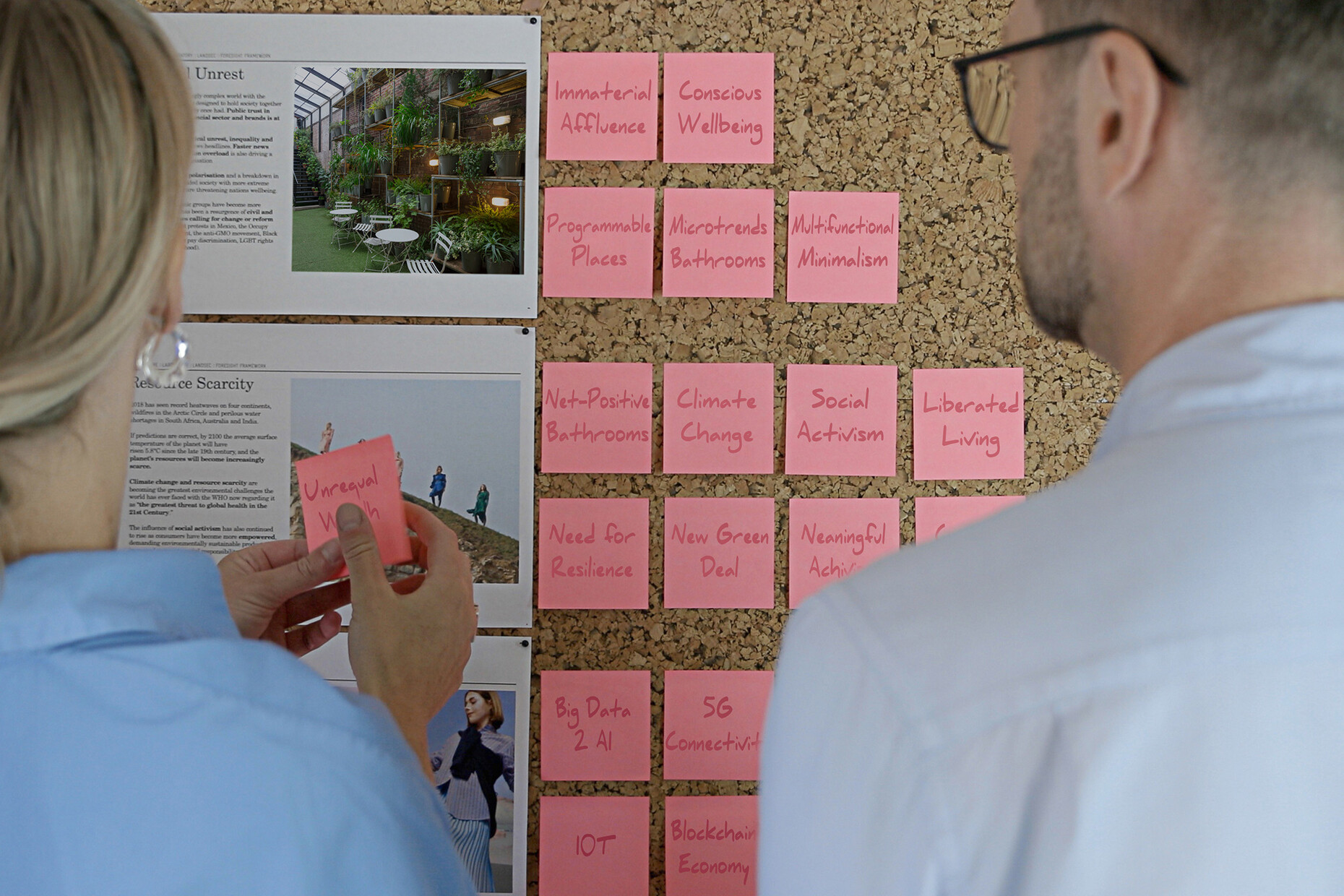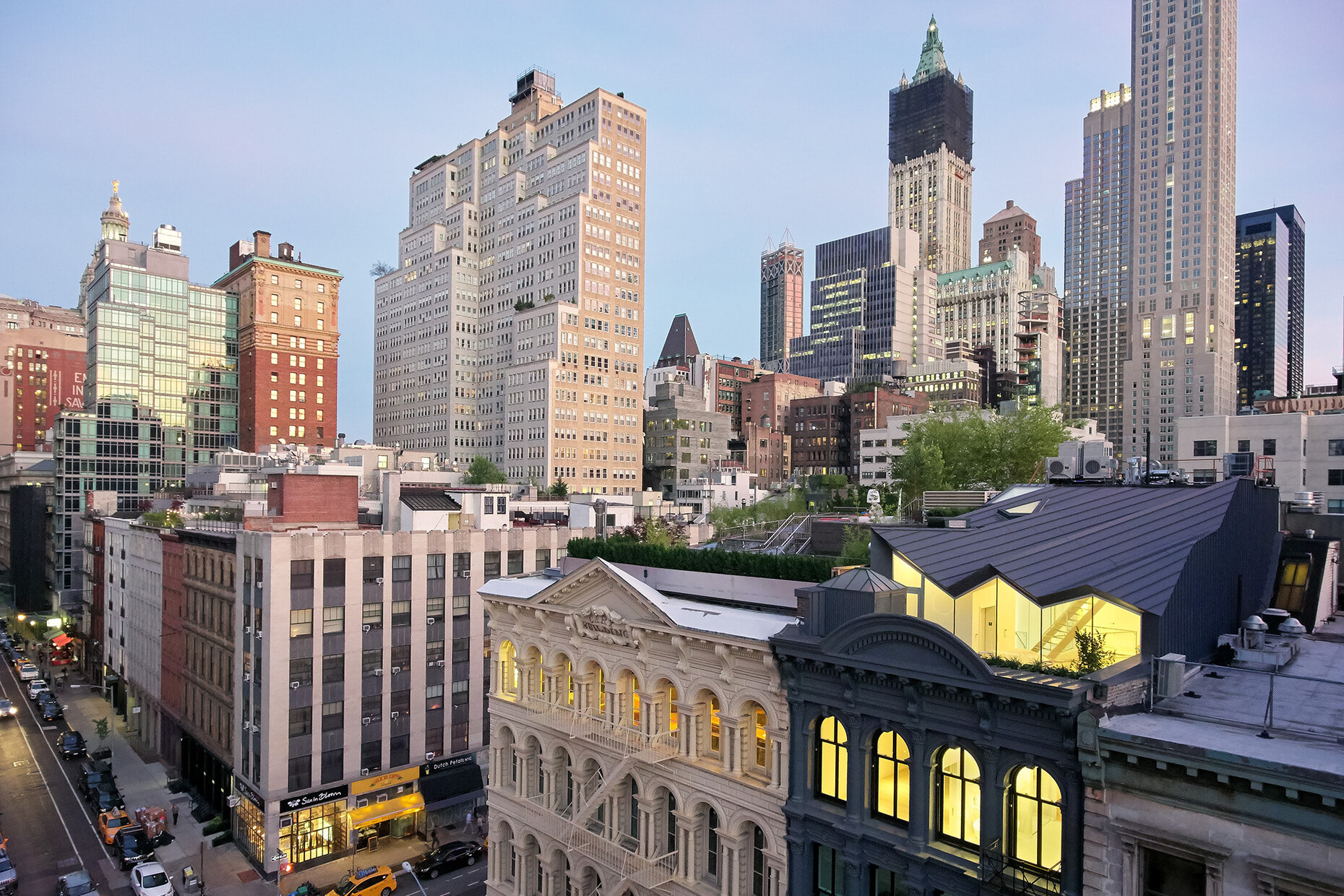Compact Luxury
According to a UN forecast, by the year 2050 more than two thirds of the world’s population will be living in cities. This will mean that people will be coexisting in limited space and this will affect both architecture and interior design. However, what shape could comfortable living take in such circumstances? And what might be the definition of spatial luxury in such cases? AXOR is addressing such questions in a "Whitepaper" and is investigating the effects of urbanization. In this context, the designer brand of the Hansgrohe Group is collaborating with London-based futures consultancy "The Future Laboratory" to develop the "Compact Luxury" project. The objective is to foster a creative exchange between planners: "What can architects and interior designers do not just to optimize these spaces but to enhance them? To infuse them with character, meaning and soul? To deliver on the very personal perception of what luxury is for each and everybody?" This is how Anke Sohn, Head of AXOR Brand Marketing, explains her company’s approach to this.
With this in mind, AXOR defines three trends, namely "Liberated Living", "Immaterial Affluence" and "Conscious Wellbeing". The first point refers to our global urban culture and the associated principle of networking which allows younger city dwellers in particular to see themselves as part of a worldwide urban community. This is accompanied by a desire for spatial flexibility. The result is a form of multifunctional life with smooth transitions between work, leisure time and recreation. What is sometimes termed a "co-culture", with areas such as co-working, co-living and co-creating, is now putting the appropriate framework in place for this, the kind of scenario where people with the same interests can be networked directly. The second trend – "Immaterial Affluence" – highlights the changing definition of material luxury. Instead of ostentatiously displaying wealth, the objective here is to achieve a new commensurability and humility in the face of growing global inequality. This is also impacting architecture, the main characteristic of which AXOR believes will be to get back to basics. In future, instead of excessively large spaces, people will be adopting a compact and minimalist approach, which will be considered a new form of luxury.
For the third trend, "Conscious Wellbeing", AXOR looks at the boom in the wellness sector as part of the fitness and healthcare industry. Since places for mindfulness and well-being are something of a rarity in the urban context, being able to retreat into your own four walls as a sanctuary from the hectic pace of the city is becoming increasingly important. Accordingly, the ability of a living space to convey peace and quietude is set to become more important than the number of square meters it boasts – as is the freedom to furnish the space available to suit its occupant’s own particular tastes. This desire for personalization even extends to the bathroom, which represents a particularly suitable place of retreat from the sensory overload in the urban sphere. Here, the three trends are reflected in a microcosm, with individualization scenarios and sustainable use playing just as important a role as new hygiene concepts and the multifunctionality of the individual appliances.
One example of this is the "AXOR Starck V mixer" with its glass spout which, because of its transparency, takes an impressive approach to allowing users to truly experience the use of water and thus to question just how much water they actually need to use. With collections such as "AXOR MyEdition" which are partly made of sustainable materials such as glass, wood and leather, users can design their bathrooms as they see fit on the basis of the chosen surfaces. At the same time, the "smart technology" offers new solutions: Electronic faucets with sensor technology like "AXOR Uno" help save water, and thanks to multiple occupancy, faucets can also serve as antiviral hand dryers. The possibilities for meeting future challenges are manifold. What they all have in common is that they give people much more elbow room in limited spaces.

























































































